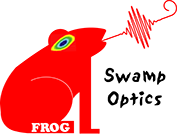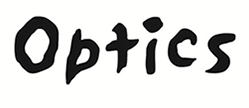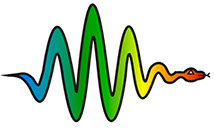GRENOUILLE
A simplified elegant FROG device, GRENOUILLE combines the full-information pulse measurement capability of FROG with extreme experimental simplicity. GRENOUILLE operates alignment-free, requires only a few simple optical elements, and naturally operates single-shot. This tutorial introduces GRENOUILLE, teaches its operating principles, and shows why it is a superior technique for measuring ultrashort laser pulses. It also describes its unique ability to measure the elusive spatio-temporal distortions—like spatial chirp and pulse-front tilt—deleterious distortions common to ultrafast lasers.
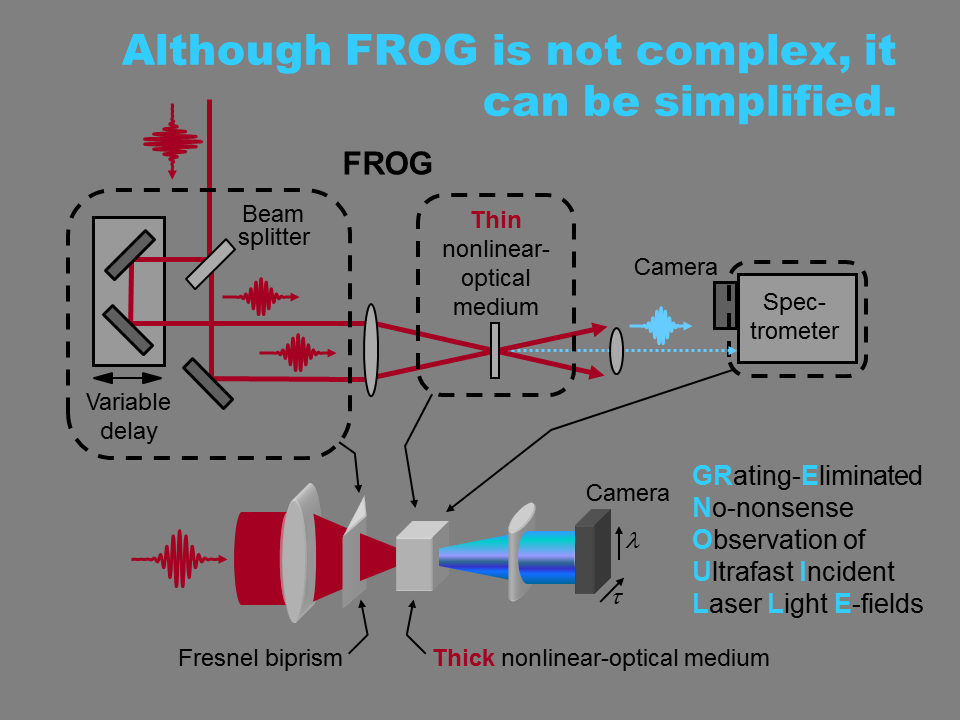
How does GRENOUILLE work? First it replaces the usual beam splitter, variable-delay stage, and beam-recombining optics with a single simple optical element: a Fresnel biprism. A Fresnel biprism is simply a prism with a very large apex angle, which splits the beam in two and crosses them (see below). Also, when the beams cross, the delay between them varies across the nonlinear-optical crystal. Imaging the crystal onto a camera then generates all the required delays on a single shot, specifically, at different places in the crystal. So the Fresnel biprism does precisely what all those other optics did, but much more simply. Even better, unlike those complicated optics, it never misaligns.
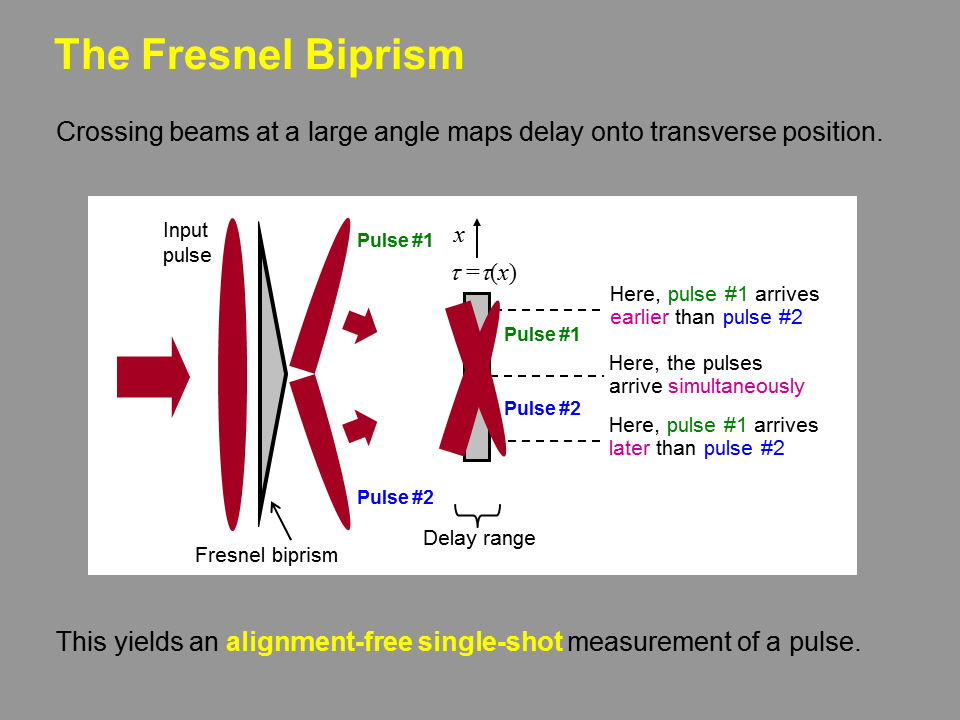
Okay, what about the thick crystal? Pulse-measurement devices like autocorrelators are infamous for requiring ultra-thin crystals in order to generate the second harmonic for all the wavelengths in the pulse. Now, we're doing the opposite! It's because, for a FROG, we need to spectrally resolve the second harmonic, so why not take advantage of an SHG crystal's tendency to only generate a given second-harmonic wavelength in a given direction to also spectrally resolve the generated pulse? See the figure below, which shows that the thick crystal, not only performs the usual autocorrelation, but also the spectral resolution (in place of a spectrometer) because the wavelength generated in such a crystal depends on angle. How convenient!
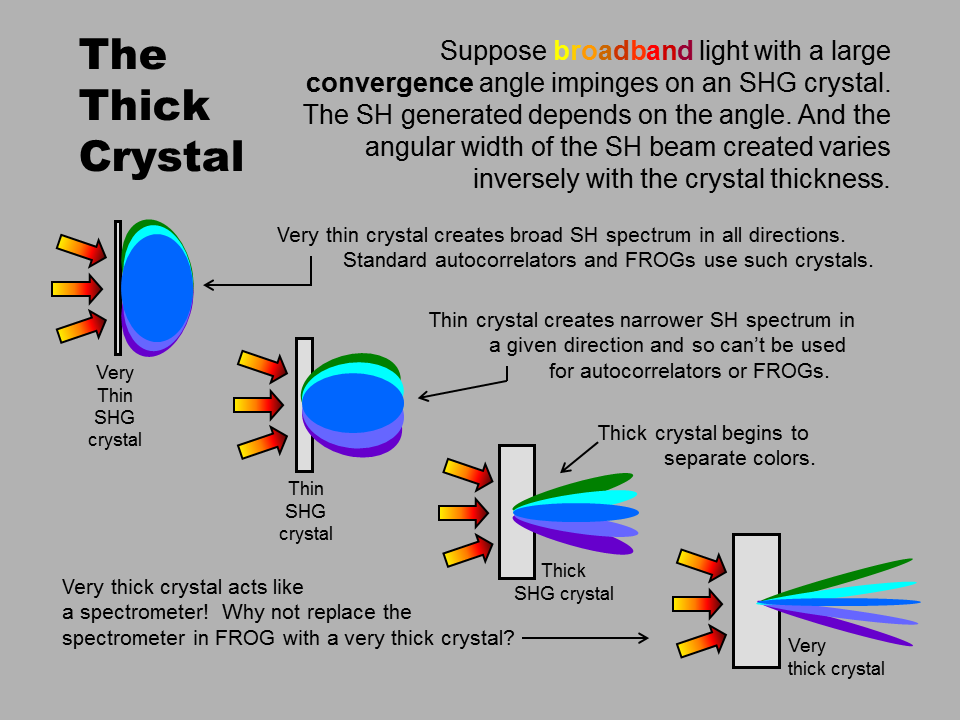
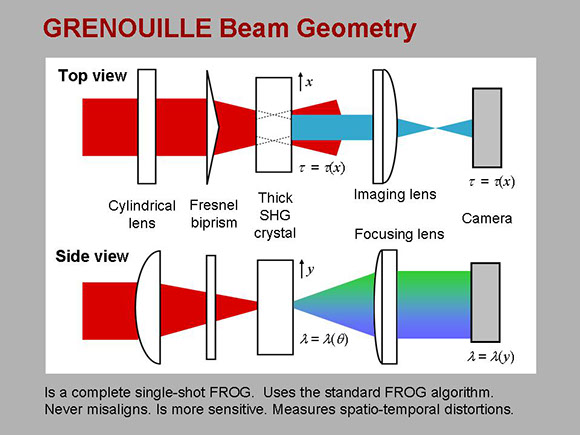
Views of GRENOUILLE from the top and side. In the (horizontal) x-direction, the Fresnel biprism maps delay onto transverse position at the crystal, which is then imaged onto horizontal position at the camera. In the (vertical) y-direction, the crystal spectrally resolves the second-harmonic light generated in it. The lens afterward maps angle (and hence wavelength) onto vertical position at the camera.
GRENOUILLE measurements of a complex triple pulse. Note the excellent agreement between the GRENOUILLE measurement of the spectrum and the high-resolution spectrometer measurement of the same pulse. Of course, unlike the spectrometer, GRENOUILLE also yields the phase.
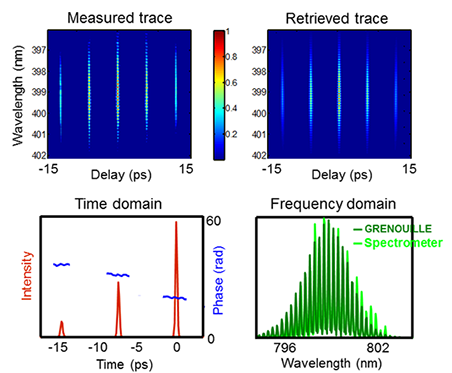
GRENOUILLE also measures spatio-temporal couplings
PDF summary of GRENOUILLE
Copyright © 2022 Swamp Optics, LLC. All Rights Reserved.
